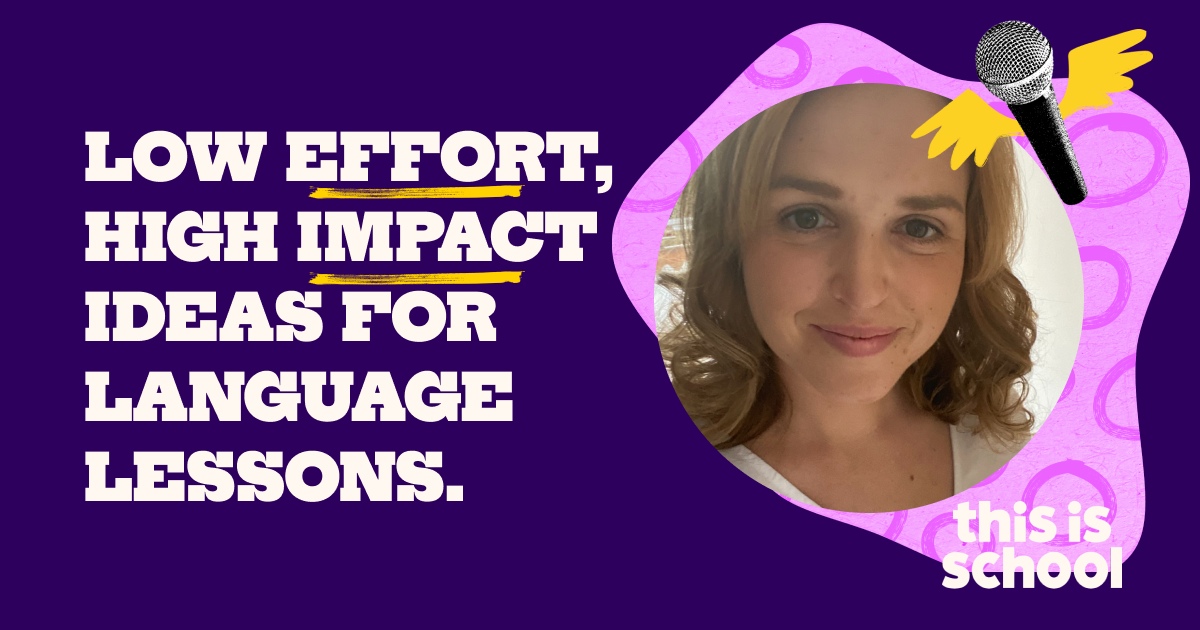Languages and the Learning Landscape


Language learning is an exploration of the mechanisms of how language functions, the culture of how a people group interacts and the process of mediating between them. When we see all three aspects as intrinsic to language learning, it becomes far easier to connect our language lessons to every other subject in the curriculum.
One of the joys of delving into a subject is seeing how it fits into the wider landscape of learning. All subjects interrelate and together provide us with a comprehensive picture of how the world works and our place within it. Learning any language, whether it’s your first or fifth, invites you to explore the world from a different perspective and opens your mind to different possibilities.
Language learning is an exploration of the mechanisms of how language functions, the culture of how a people group interacts and the process of mediating between them. When we see all three aspects as intrinsic to language learning, it becomes far easier to connect our language lessons to every other subject in the curriculum.
Modern languages are a SHAPE subject (social sciences, humanities and the arts), sitting comfortably under the humanities within primary and secondary education. However, at university, languages traverse the whole of the SHAPE landscape. You can study ethnomusicology, sociolinguistics, European film, language politics, Egyptian hieroglyphics, and the linguistic turn in philosophy.
Often these connections are not made explicit until A-level or even degree (if at all). By then, the majority of learners have dismissed themselves as uninterested or simply not good enough. In an attempt to convince learners otherwise, our responses can often sound too shallow or glib, even out of touch. A holistic approach is required and language teachers should not be left to do it alone.
When the value of language learning is questioned and uptake of languages is in decline, our role as educators of any subject is to help learners understand what language learning offers us and how the skills and knowledge learnt in the language classroom connect with all other areas of learning. By raising the value of one subject, we raise the value of all.
Languages and STEM
With an ever-increasing emphasis placed on STEM, it is important to acknowledge the interconnections between SHAPE and STEM subjects and ensure that all subjects are given due recognition. When we consider language, culture and mediation as the three core components of language learning, the connections between languages and STEM are not so hard to find.
The following thoughts are prompts and conversation starters for you and colleagues to discuss ways to make the links between languages and STEM more explicit in the classroom. The aim of which is to help learners recognise the value of all disciplines and understand how they mesh together to form a deep and broad learning landscape which they can explore for the rest of their lives.
Science and Technology
Communication is a core skill developed in language lessons. Science communication seeks to connect science with society. It focuses on the dissemination of scientific concepts and emerging technologies to a non-expert audience as well as raising awareness of and interest in science. Engaging with different cultures and communities is essential. Such skills are developed in the modern language classroom.
Perceptions of science, what it is and how foundational it is to our philosophy is not universal. Examining the culture of science illuminates the value we place on the subject in the West and how that compares around the world, today and in history. A monolingual and monocultural approach to science is detrimental to the subject as it fails to allow for diverse scientific thought. Many learners dismiss studying another language as ‘everyone speaks English’ and the anglophone emphasis within scientific research only confirms that within their minds. We need therefore to encourage learners to see that scientific study is not that simple and that their language lessons give them the tools they need to critically evaluate science from diverse perspectives.
Health and Social Care
A growing number of learners are studying health and social care or choose a combination of science subjects in order to go into medicine. The ability to communicate in different languages and to people of different cultures within health care is only becoming more and more important. Doctors, nurses and carers are required to speak and listen to others with clarity and empathy on a daily basis. They work alongside translators and interpreters to ensure that patients and their families are cared for in a holistic and culturally-sensitive way. It is not necessary to be fluent in a language to develop these skills but a basic understanding and appreciation speaks volumes in such circumstances.
Mathematics and Coding
Our letters are Latin and our numbers are Arabic; such is the influence of one language on another. Language gives us the means and vocabulary to code and think mathematically. Both subjects require logic and abstraction, problem-solving and creativity. We must learn to recognise patterns, decipher rules and accommodate the exceptions to those rules. Thinking of grammar, syntax and morphology as a form of maths helps to make the unknown exciting, a logic puzzle to solve, rather than something to fear. Thinking of algebra, coding and even graphs as a type of language teaches us to seek meaning behind the form and taps into skills learnt from birth.
--
Tallulah Holley is the founder of Language Unpacked and lead researcher for SHAPE in Schools. As a linguist and all round lover of learning, she is passionate about ensuring that primary and secondary learners understand the importance and relevance of languages and other SHAPE subjects in order to make informed decisions about their education.
Twitter: @SHAPEinSchools @TallulahHolley
If you're looking to raise the profile of languages in your school, start here.

